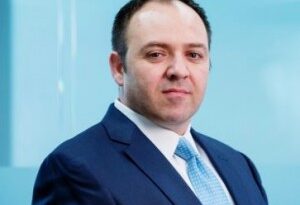Capital introduction: Challenges and opportunities in the APAC region
Amy Cheung, Asia Capital Introduction at Marex Prime Services, talks with the Hedge Funds Club about capital raising in the region. Based in Marex’s Hong Kong office, Amy has extensive experience in helping emerging and mid-sized funds with capital-raising strategies and pitches, sharing insights from the firm’s extensive investor network.
What are your top tips for funds in the region seeking to raise money in the current climate?
Firstly, and perhaps obviously, you need to demonstrate good performance numbers. It’s not necessarily about outperforming the market by 200% but rather having your return stream being consistent with your investment philosophy. Secondly, investors are keen to understand the lessons you’ve learned from past performance and how they have influenced your strategy. It’s reassuring for allocators to see evidence that you continually review and refine your investment strategy, especially after periods of drawdowns. If, for example, you didn’t perform well in a year, why was that the case? And are there any lessons around risk or any instruments you think you shouldn’t be trading anymore? Sharing these insights can be an important part of your pitch.
What are some of the key regional trends that fund managers should be mindful of?
With China’s economy apparently slowing, we are seeing some pivoting to cover other geographies. This can raise alarm bells with allocators. There are some extreme cases, where a fund’s top five out of ten holdings can be entirely US-based companies, and funds are moving into places like India or Japan without necessarily having the experience in these territories. For experts in Chinese markets, a 10-15% exposure in the US is generally acceptable but anything beyond that starts to raise some concern. Investors from outside the region understand that it makes sense to diversify into other markets to boost performance numbers. However, they are drawn to Asia in search of alpha and to benefit from the ‘on the ground’ expertise and regional network. Another key area to note is that we are currently seeing a trend of funds getting absorbed by the large platforms. Investors will need to be convinced that their capital will be secure for at least the next two to three years and that you have no intention of going down this route.
What’s the best way to approach allocators?
A fund needs to figure out what kind of investor they want to target and have a strong understanding of the pros and cons of each investor type. For instance, family offices can move fast. If you meet their criteria, they are often happy to invest US$1m-US$2m initially, and gradually let the relationship build, scaling up significantly over time. However, they typically have high return expectations – so if a fund underperforms for two years in a row, they will redeem, and building their trust again can be very difficult. In Asia, the investor community is quite close-knit. If one person is interested in investing, they often inform their peers, and you can end up starting with a US$10m ticket from contributions from multiple family offices at the same time. At the other end of the spectrum, some managers may want to target institutional investors as their tickets are larger, often in excess of US$20m or US$50m. Their due diligence process is extensive and it can often take 18 months or two years for the money to come in. It’s important to know your audience and who you’d like to approach. Be visible to them; if your performance is strong, let them know. Attend relevant events where you can meet them and send them information, but don’t bombard them. Prime brokers with capital introduction specialists can play a key role in bringing fund managers and investors together, including family offices, fund of funds, endowments and foundations.
Are overseas allocators still interested in putting money into the region?
Whilst there is undoubtedly some waning interest in China, we are still seeing overseas allocators, particularly from Europe, visiting the region to see if China is still investible. However, significant investment opportunities exist beyond China. Asia consists of developed and emerging markets, offering numerous opportunities for capturing alpha in the region.
What should you look for when selecting a prime broker to help with capital introduction?
It is a very relationship-driven region. Therefore having a team with locals on the ground. who have been in the markets and understand the dynamic is important. Also, being part of a franchise with a global reach, such as Marex’s, is of great value to managers seeking to grow globally. Certainly, managers should check out the calibre and capabilities of the team and ask questions to assess their access to potential investors and their track record. Do your due diligence carefully and select a stable of prime brokers who will evolve with you as your business grows and can help to plug any gaps you may have along the way.
And finally, tell us about Marex’s Prime Services Capital Introduction offering.
We have a strong global team. Many of us have worked in the allocator space or hedge funds. We are experienced consultants who can advise on strategy and guide you through the entire process. We are a senior team that understands the investment strategies of our clients and our allocators, putting us in a strong position to put them together at the right time. We not only facilitate introductions but like to ensure our clients are prepared for their meetings and will consult on managers’ marketing material and seek feedback from meetings we facilitate. Finally, we make a concerted effort to develop strong relationships with a differentiated set of investors versus our peers and we have a very strong focus on service. To find out more, please get in touch via acheung@marex.com or come or meet us at the Hedge Funds Club events in Hong Kong (22 May) and Sydney (9 September).









